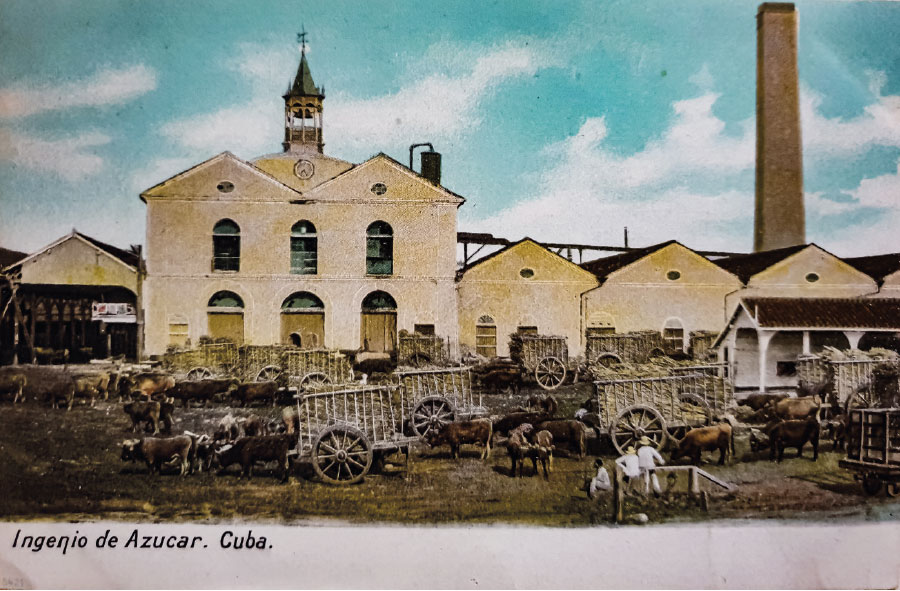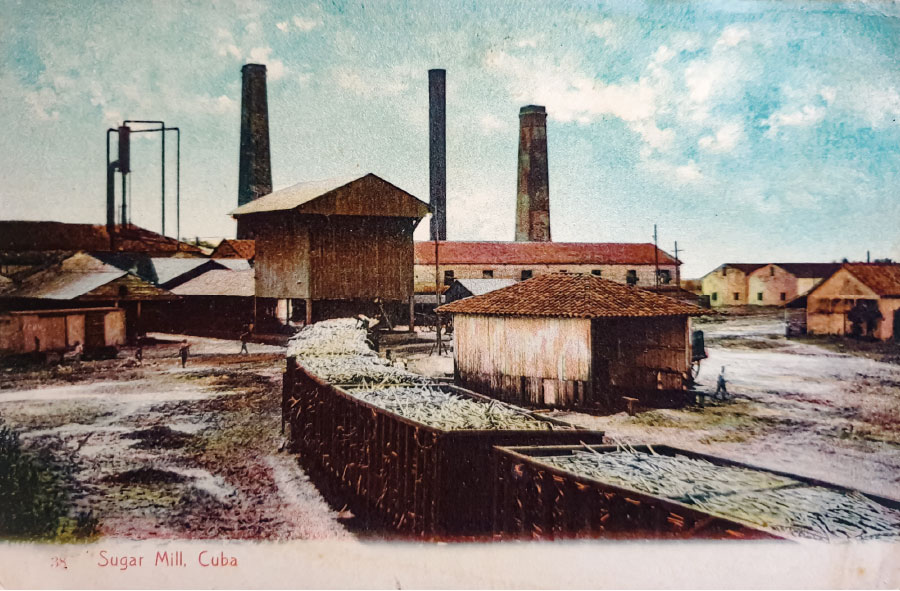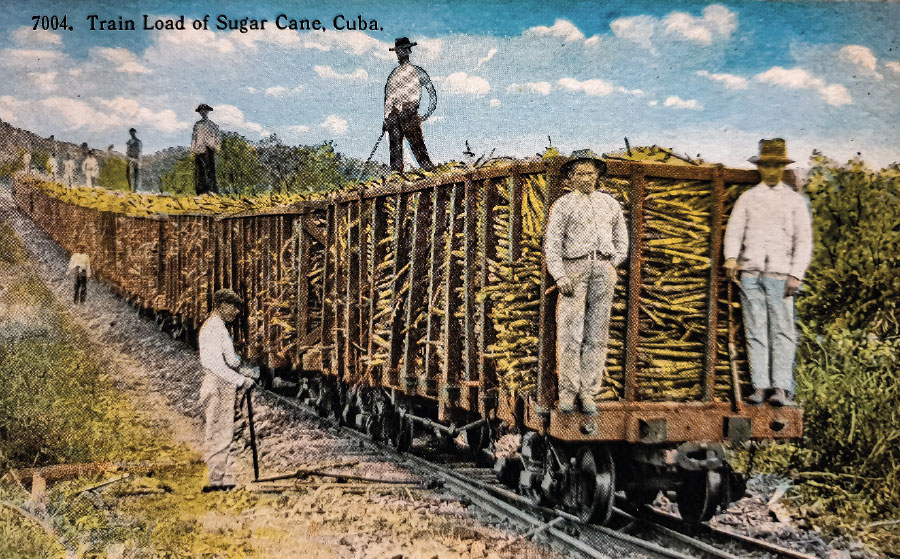Bacardí is undoubtedly the most famous rum brand in the world. But more than a brand, we are talking about a style and a new aesthetic that emerged in the 19th century and conquered the world in a few decades. This is the first part of this long history that we are now presenting.
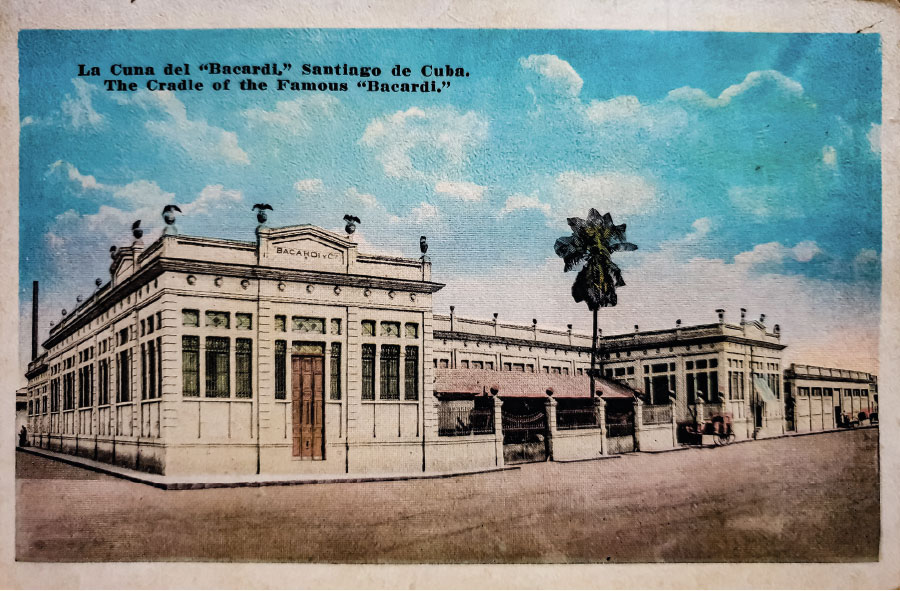
The first Bacardi company (1843-1855)
The Cuban economy in the 19th century was essentially based on sugar, which was dependent on slavery. The planters, aware of what happened in Haiti at the end of the 18th century, were only afraid that the slaves would revolt and found a Black Republic. Moreover, slavery had been abolished in the British and French colonies.
The planters worked hand in hand with the power in Madrid to maintain the servile system. The Bacardí family lives at 32 Marina Baja Street in Santiago. It was here that Facundo Bacardí created a distillery in 1862 with the help of a Frenchman named Bouteiller. But until then, the “Facundo Bacardí y Compañía” did not sell rum yet… 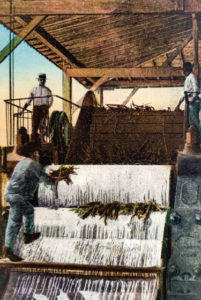 Originally from Barcelona, Facundo embarked for Cuba, heading for Santiago, a city where Catalans dominated the trade.
Originally from Barcelona, Facundo embarked for Cuba, heading for Santiago, a city where Catalans dominated the trade.
His brothers would later join him and take part in the emergence of the distillery. He began by founding a bazaar in which one could find crockery, toys, oil lamps, but also coffee, sugar, etc., but not yet rum. In 1844, his wife Amalia gave birth to their son Emilio. She raised the child and Facundo took care of his business. Everything went well until August 20, 1852, when an earthquake destroyed a large part of Santiago.
The resulting sanitary conditions were favorable for the development of cholera. Amelia, Emilio and Facundo leave to take refuge in Spain. The latter returned to try to save what could be saved from his business… but it went bankrupt in 1855.
The rum project (1855-1862)
Until the middle of the 19th century, Cuban molasses was used primarily to supply the American market. Planters exchanged slaves deported from Africa for molasses that was shipped to New England. The sugar brought enough wealth to the island that it was content to produce a poor aguardiente de caña (with the exception of some distilleries that were even favored by foreign connoisseurs, ed.)
On the other hand, it should be remembered that the Spanish authorities, since the beginning of the colonization, have slowed down the development of brandies for reasons of “health and morality” (and to avoid any competition with the wine brandies of the cities). Even though each plantation had a small still, the aguardiente usually supplied only the surrounding area.
In the 1850s, the situation changed. The price of molasses fell as Americans turned away from rum in favor of whiskey. Interest in rum in Cuba emerged and books were published explaining how it was made. Paradoxically, Cuban rum suffers from overly rich molasses. It generates a fast fermentation and a too high alcohol level. Lowering the alcohol level required a technical mastery that the planters did not yet possess.
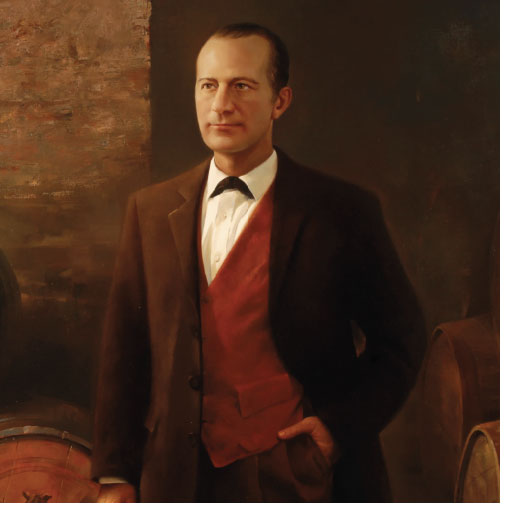
Facundo Bacardí saw the change in progress and studied the case of John Nunes, one of the first distillers in Santiago, who had been established since 1838. Facundo noticed that he was able to produce his rum, even if it was of poor quality. He then contacted a certain José Léon Bouteiller, a French-Cuban distiller from Charente.
A friendship was born which allowed Facundo Bacardí to experiment with rum distillation. He did not wish to imitate the rums of the neighboring islands but rather to be inspired by the finest whiskies and brandies, prized by the upper classes. For this, with the Bouteiller apparatus, he tried different recipes for his mash, different yeasts, and different methods of distillation. A few months after starting the company, Bacardí and Bouteiller felt ready to market their rum. Facundo installed it on the shelves of his brother’s store, Magín Bacardí, and it was an immediate success locally.
Customers identified it as Bacardi’s rum. Faced with this audience, Bouteiller and Bacardí began commercial production. On February 4, 1862, they bought the distillery of John Nunes and acquired a second one soon after, knowing that the city of Santiago had only four registered stills. In May 1862, the joint venture took the name “Bacardí, Bouteiller & Company”, Facundo and José contributed their work while his brother José Bacardí deposited the social capital of 3000 pesos..
The Bacardí style (1862-1874)
This crystalline and “odorless” rum continued to spread among the inhabitants of the city of Santiago. The success of this rum became known and its distribution area gradually expanded, reaching Havana in 1868. The secret of this first Bacardí-Bouteiller rum lies in two fundamental steps: fermentation and filtration.
Facundo Bacardí adopted rapid fermentation, as was practiced for cognac. He thus broke with the model of heavy rums with long fermentation. The filtration technique was inspired by that of vodka. Since the end of the 18th century, the charcoal filter has been used for this alcohol.
Facundo Bacardí is the first to follow this approach in the world of rum. The systematic aging in American white oak barrels was also adopted. Facundo’s priority, once the quality of his rum was recognized, was to impose his name “Bacardí” as a brand. As an advertising genius, he signed the labels of the bottles.
Labeling the bottles was still a rare thing at the time, but for Facundo it was the key to success. Over the years, he used his findings in several rums to produce, in 1873, Ron Superior Extra Seco, the purest rum ever sold in Cuba.
However, the political situation took over in Cuba. The slaves were gradually freed from their chains in the Caribbean, but also in the United States. The planters, though traditionally in favor of the colonial power, gradually disapproved of Spain’s control. Emilio Bacardí, son of Facundo, liberal and patriot, adheres to this impulse of liberation of men and spirits, an impulse that will become independentist.
He was convinced of the usefulness of a union between the white and mulatto bourgeoisie and the freed slaves, to whom racial and democratic equality had to be promised. This became a reality in 1868 when a rich planter freed his slaves, founded an army and attacked the colonial authorities. Without knowing it, he started a war that would last ten years. The Madrilenian authorities proposed reforms that Emilio supported.
Emilio and his brother Facundo Junior worked for the time being with their father, who was hostile to an armed struggle but did not contest the idea of independence. Emilio is trained in the techniques of rum distillation but is locked in a conflict of loyalties. Should he remain loyal to his family, the business needing stability, or to himself.
He hesitates, displaying his convictions without taking a step that would be prohibitive in the eyes of the authorities, who nevertheless keep an eye on him. Emilio decides to deepen his two fields of action: on the one hand, he invests a little more in the distillery, on the other hand, he finances in underhand the movement of liberation of the island.
In the countryside, the insurrectionary forces burned the plantations and encouraged the slaves to join them. But the war ran out of steam, and the leaders of this spontaneous army disappeared one after the other. Within the company, the situation changed. In 1874, José Bacardí, Facundo’s brother, sold him his shares in the company.
Bouteiller, in declining health, did the same. Emilio and Facundo Junior, the sons, committed funds to the family business, which was renamed “Bacardí y Compañía (Bacardí y Cía)”.
Conquering Cuba, conquering the world (1874-1898)
In 1876, Bacardí sent its products abroad, such as to the International Exhibition in Philadelphia, where the Ron Superior Extra Dry won a prize. In 1877, a medal was won at the Universal Exhibition in Madrid. The company also took advantage of the phylloxera crisis that ravaged French vineyards in the 1870s and 90s to send Bacardí bottles to France. The same phenomenon occurred in California.
In fifteen years, Facundo Bacardí will have achieved the beginning of recognition abroad. If Bacardí’s history does not end there, his own within the company does. In 1877, he retired from the business and handed over the company to his three children. Emilio became the president.
The new leader has not given up his dreams of independence. His new position offered him an ideal cover. He made contact with the rebels and visited the remote plantations, but officially for commercial reasons. The war that began in 1868 continued. The international breakthroughs of rum on the one hand and the political commitment of the company director on the other, lead the Cubans to consider the Bacardí brand as a national symbol… and the Spaniards to appropriate it as a symbol of Spain.
Each side claims the rum as its own. The confrontation ended in 1878 with the victory of the Spanish army. Emilio Bacardí, who had escaped from the authorities for ten years, was imprisoned following a final uprising that he had disapproved of, and was then sent to Spain. His links with rebel circles were not entirely unknown to the authorities.
The following years were difficult. Financial difficulties coupled with a fire in one of the two distilleries led the company to bankruptcy. Emilio returned to Santiago after almost four years of absence; the business had to be rebuilt.
In 1884, Henri (Enrique) Schueg joined the company as a financial assistant, with ideas for exporting Bacardi rum. The establishment of the rum in Spain was confirmed to the point that Bacardí became a supplier to the Court in 1888. Spaniards who had stayed in Cuba took charge of spreading this rum to the rest of the country.
At the Barcelona Universal Exhibition, Bacardí presented itself as the most Cuban of rums, with the slogan “The one that made Cuba famous”. In France, an advertisement from 1889 presented Bacardí rum as having obtained a “Gold Medal at all the Exhibitions”. The warehouse in Paris was located at 12 rue Cauchois, today in the 18th arrondissement.
Emilio did not give up his ideals, even if they disrupted his business. A new war of independence broke out in 1895. His status as a recognized businessman prevented him from publicly expressing his support for independence, although his support was well known. He then financed the underground networks.
But until then, how to deal with the planters? The revolutionary army opted for the following agreement: any planter who paid a tax to finance the army would be allowed to produce his sugar, provided he did not harm the rebellion. Emilio, who was in favor of this option, which had little effect on the production of molasses, an essential raw material, collected the tax himself from several planters. He thus managed to secure his supply. But he was arrested again in 1896.
In 1897, an important political change occurred following the assassination of the Spanish Prime Minister by an Italian anarchist. His successor reached out to Cuba by proposing a status of autonomy and by freeing political prisoners, including Emilio Bacardí in 1897. The latter then chose exile with his family, in Jamaica.
Facundo Junior, Emilio’s brother, remained in Santiago. As the war accelerated – in January 1898, the United States sided with the insurgents and declared war on Spain – Facundo Junior had to choose: stay or go. Enrique Schueg, who had become his brother-in-law, was also present in Santiago when the cannon was firing nearby.
As the tension increases, both feel threatened by pro-Spanish elements in the city. In agreement with Facundo, Schueg decided to leave the city. He had French nationality, which allowed him to cross the front lines unhindered. Facundo and his employees ran the store and the aging cellar day and night, taking turns until the Spanish general surrendered.
Emilio returned to Cuba in August 1898 to take over the management of the distillery. A few months later, Cuba became independent… and, in spite of itself, became an American “colony”. The company has a solid balance sheet and has been largely profitable for several years despite the economic and political crises of the time.

